Cusco, the ancient capital of the Inca Empire, serves as the gateway to some of South America’s most breathtaking high-altitude adventures. Nestled in the Peruvian Andes at 11,152 feet above sea level, this UNESCO World Heritage city offers more than just historical treasures.
The surrounding mountains, valleys, and archaeological sites provide trekkers with challenging routes that combine natural beauty, cultural immersion, and physical endurance in a way few destinations can match. Here is a list of 15 remarkable altitude trekking destinations around Cusco, each offering unique landscapes and experiences for adventurers willing to test their limits in the thin mountain air.
Inca Trail

The legendary 26-mile path to Machu Picchu stands as the most famous trek in South America, combining stunning mountain scenery with fascinating Inca ruins along the route. Trekkers traverse three high mountain passes, the highest being Warmiwañusca (Dead Woman’s Pass) at a breathtaking 13,828 feet, where the air contains roughly 40% less oxygen than at sea level.
The four-day journey culminates in the unforgettable experience of entering Machu Picchu through the Sun Gate at dawn, a moment that rewards all physical exertion with a profound sense of accomplishment.
Salkantay Trek
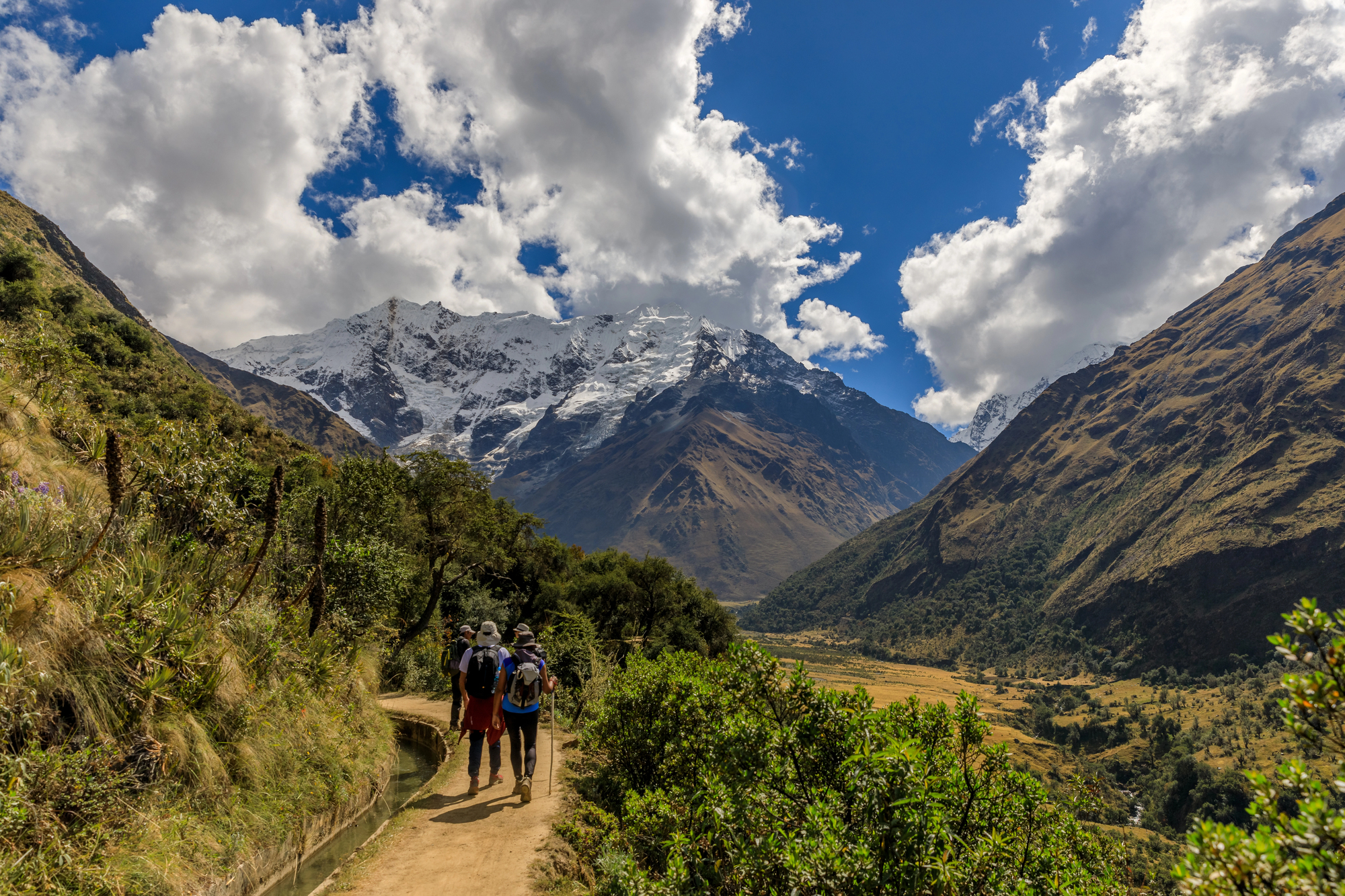
This alternative route to Machu Picchu takes adventurers through remarkably diverse ecosystems, from high alpine terrain to cloud forest. The path winds around the magnificent Salkantay Mountain (20,574 feet), considered a powerful deity in Andean cosmology and referred to by locals as the ‘Savage Mountain’ for its imposing presence.
Trekkers on this five-day journey reach a maximum altitude of 15,090 feet at Salkantay Pass, where the panoramic views of snow-capped peaks create a natural cathedral that often leaves hikers in reverent silence.
Ausangate Circuit
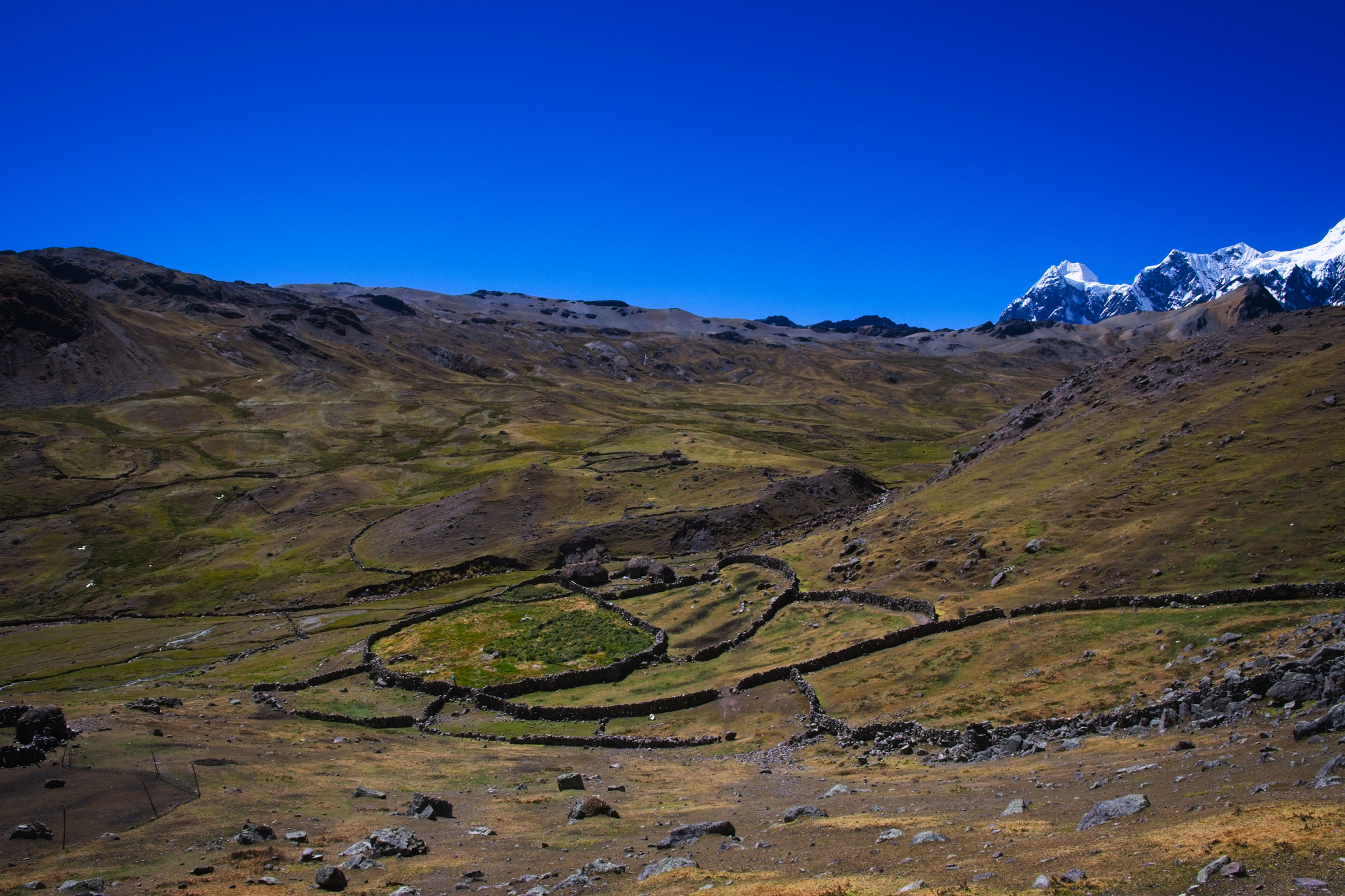
Far from the crowds of more popular routes, this challenging six-day circuit loops around the sacred Ausangate mountain (20,945 feet), the highest peak in the Cusco region. The trek passes through remote Quechua communities where traditional ways of life continue largely unchanged for centuries, offering rare glimpses into authentic Andean culture.
Hikers traverse several passes exceeding 16,000 feet and encounter stunning natural features, including turquoise glacial lakes, red mountains striped with mineral deposits, and natural hot springs that provide welcome relief for tired muscles.
Like Travel Pug’s content? Follow us on MSN.
Choquequirao Trek

Often called ‘Machu Picchu’s sister city,’ Choquequirao remains 70% unexcavated and receives just a tiny fraction of visitors compared to its famous counterpart. The challenging four-day trek (eight days round-trip) requires descending and ascending the deep Apurimac canyon, with elevation changes of over 5,000 feet in a single day—like hiking the Grand Canyon twice in succession.
The reward for this tremendous effort is exploring the vast stone complex in near solitude, an increasingly rare experience in popular archaeological sites.
Lares Trek
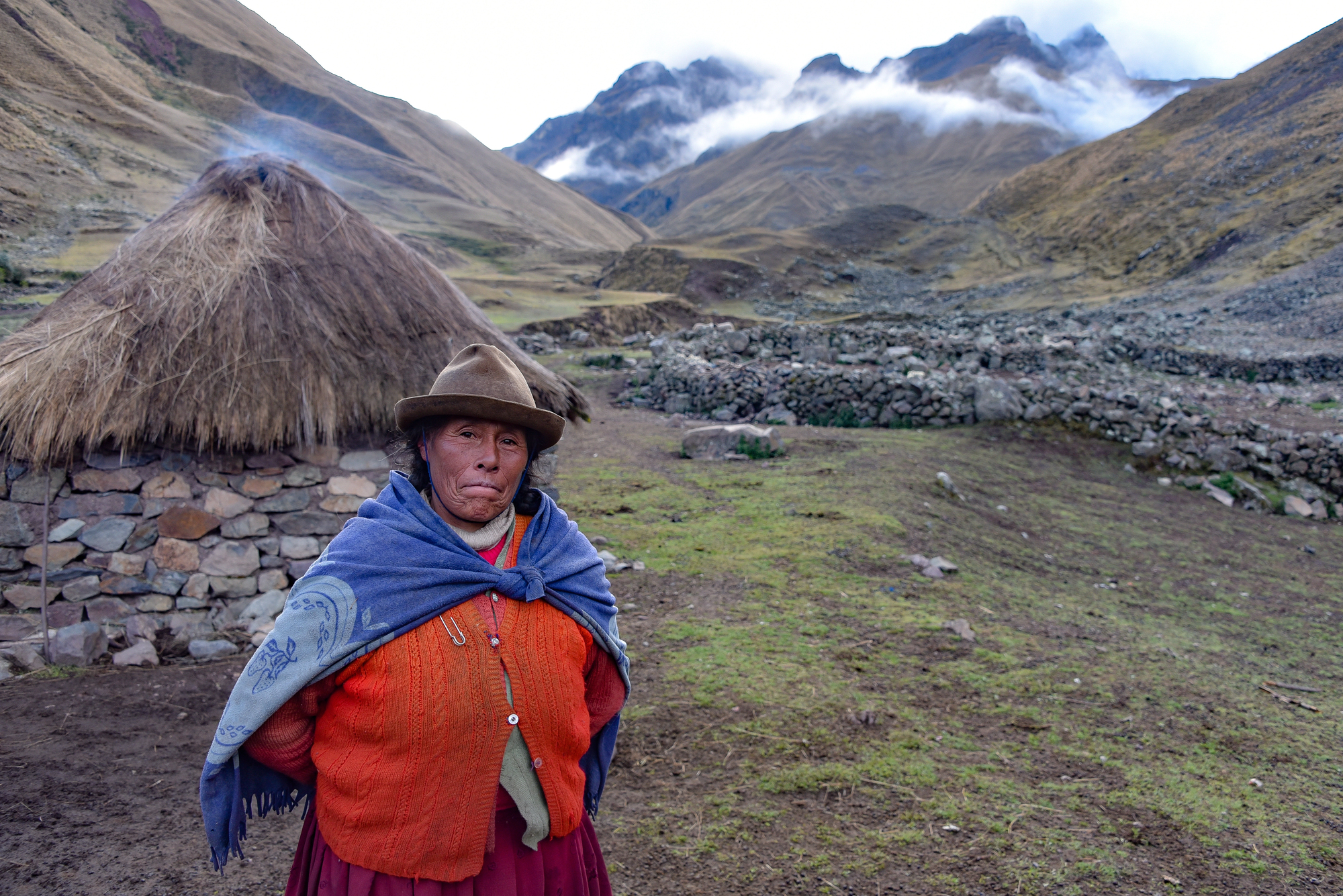
This three-day cultural route passes through traditional Andean villages where locals still wear colorful handwoven clothing and practice ancient agricultural techniques. Trekkers cross Ipsaycocha Pass at 14,600 feet while enjoying views of crystalline mountain lakes that reflect the surrounding peaks like natural mirrors.
The route offers authentic interactions with local communities, including opportunities to learn about traditional weaving techniques that produce textiles so tight they can hold water, a skill passed down through generations.
Huchuy Qosqo
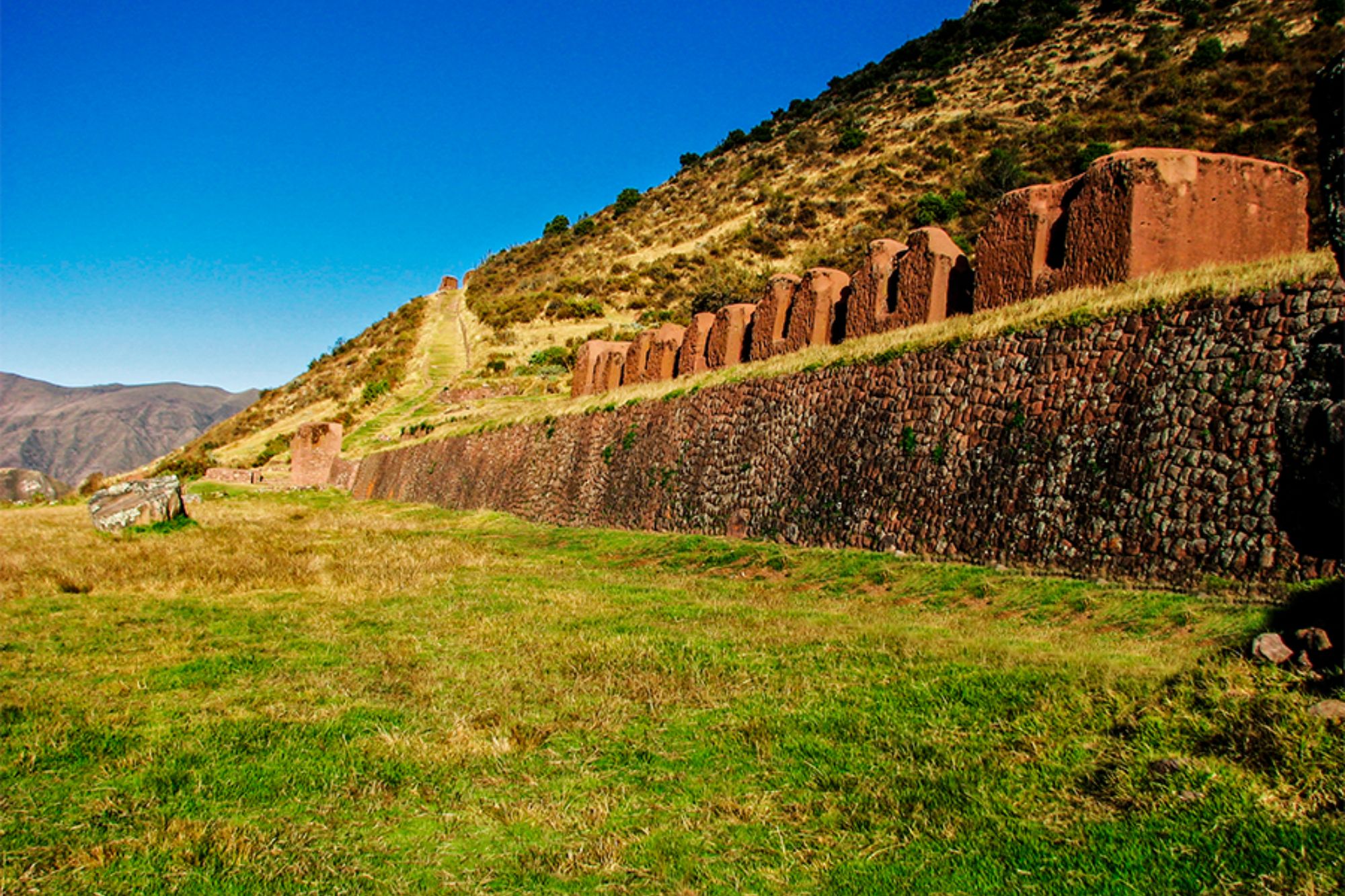
This lesser-known two-day trek leads to the ‘Little Cusco’ archaeological site perched on a plateau overlooking the Sacred Valley. The path follows ancient Inca trails used by royal messengers (chasquis) who could reportedly run these routes at altitude in a fraction of the time it takes modern trekkers.
Hikers pass through high puna grasslands where herds of alpacas graze against a backdrop of snow-capped peaks, creating postcard-perfect scenes at every turn.
Like Travel Pug’s content? Follow us on MSN.
Rainbow Mountain
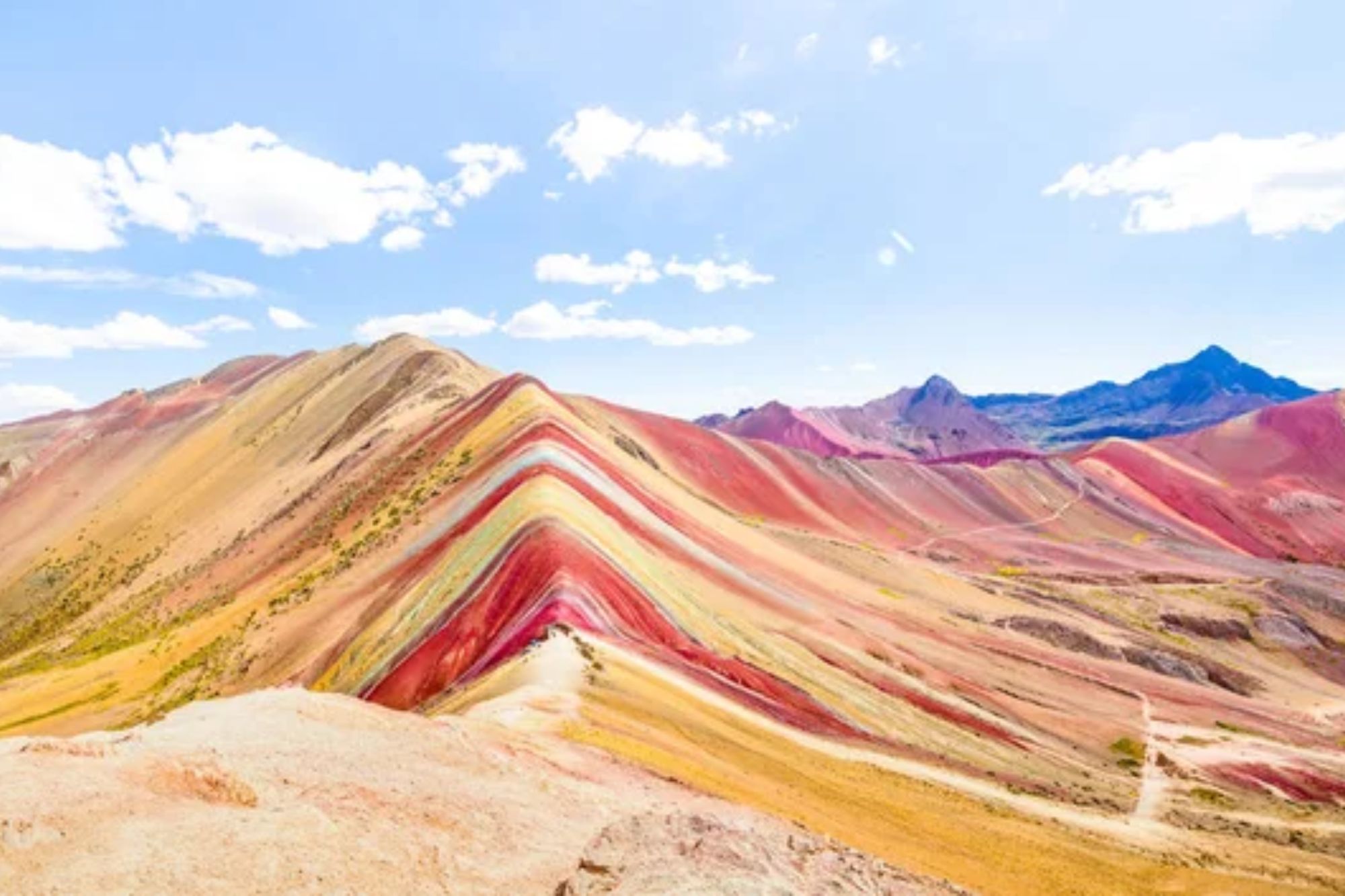
Known locally as Vinicunca, this geological wonder has rapidly become one of Peru’s most photographed natural attractions since its relatively recent discovery by tourism in 2015. The one-day trek reaches an oxygen-thin 16,466 feet, where mineral deposits have created surreal rainbow-like stripes across the mountainside, appearing almost like nature’s version of a painted canvas.
The challenging day hike serves as an excellent acclimatization exercise for longer treks, though the extreme altitude makes even this short route surprisingly demanding.
Palccoyo Rainbow Mountain
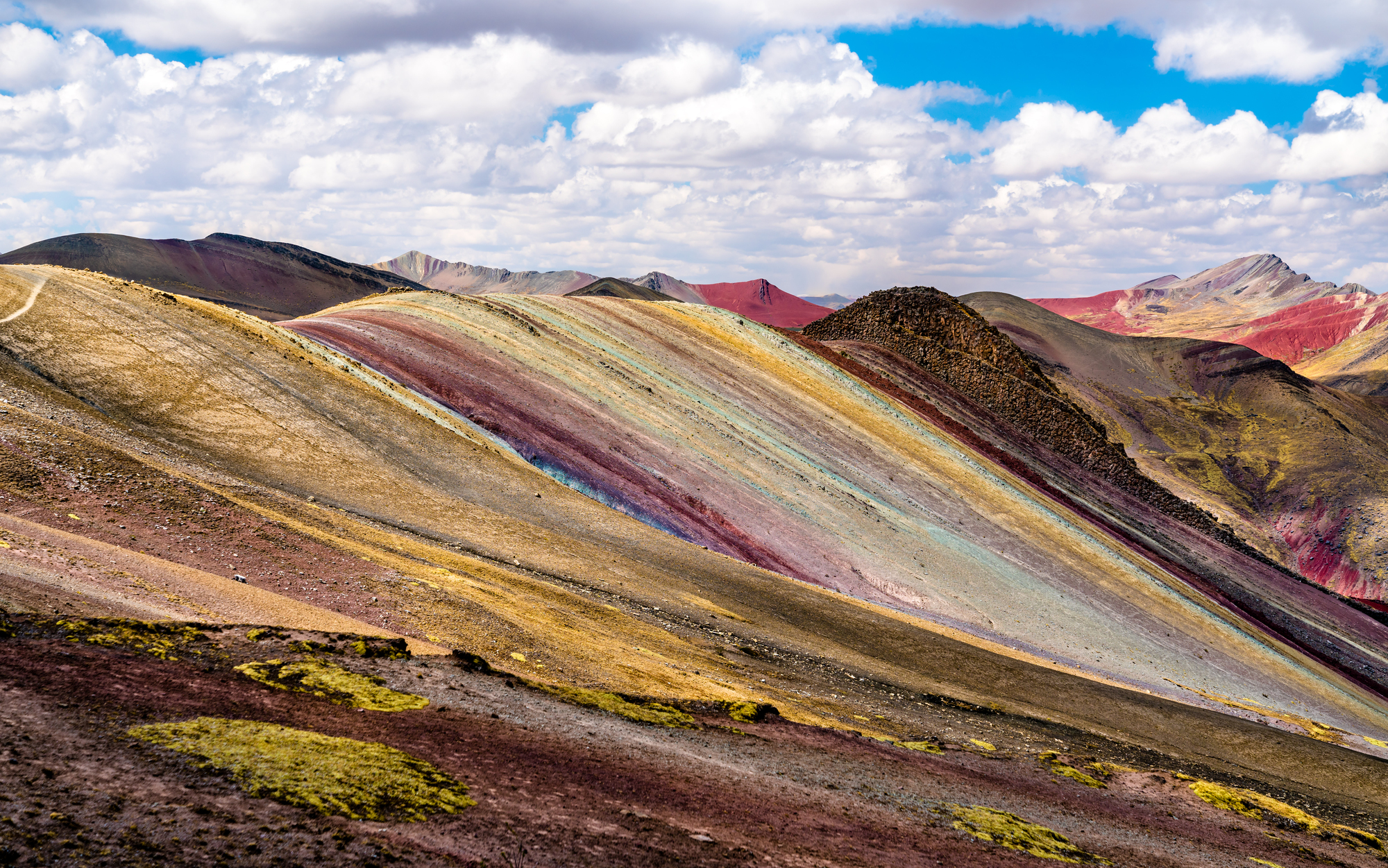
Often called Rainbow Mountain’s ‘quieter cousin,’ Palccoyo offers similar colorful geological formations with significantly fewer visitors. The trail reaches 16,400 feet but involves less hiking than Vinicunca, making it more accessible for those seeking breathtaking scenery without extreme exertion.
From the highest viewpoint, trekkers can see not just one but three rainbow-colored mountains plus stunning views of Ausangate peak, all while encountering local families herding alpacas through this surreal landscape.
Waqrapukara
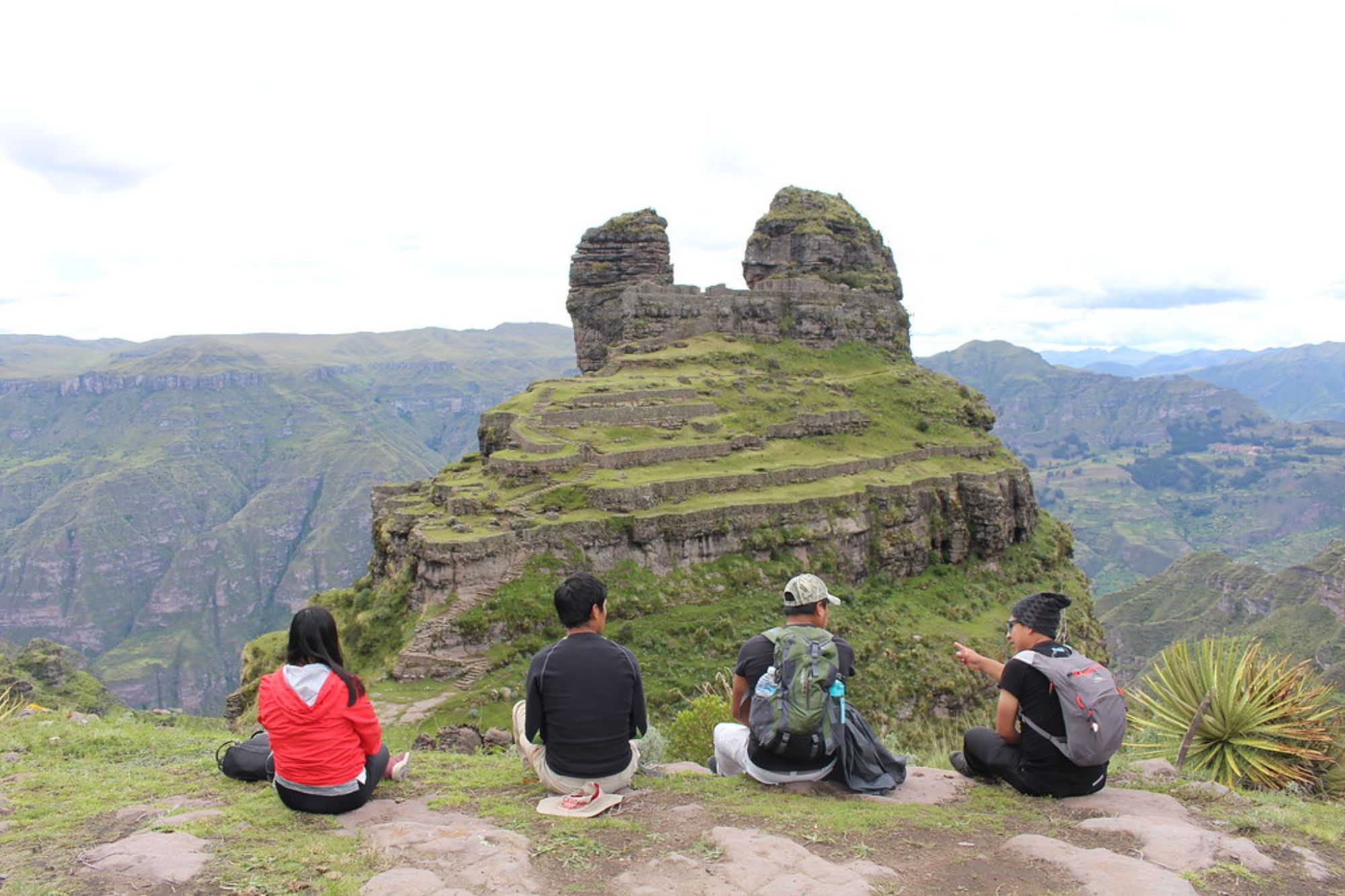
This recently popularized two-day trek leads to a remote archaeological site whose name means ‘Horn Fortress’ in Quechua, referring to the two horn-like rock formations flanking the ruins. Situated at 13,800 feet, the ancient complex sits dramatically atop a limestone cliff with 1,000-foot drops on three sides, creating natural defenses that hint at its strategic importance.
The trek crosses varied terrain from high-altitude meadows to cloud forests, with camping options that allow for magical sunrise views over the fortress and surrounding valleys.
Like Travel Pug’s content? Follow us on MSN.
Qeswachaka Bridge
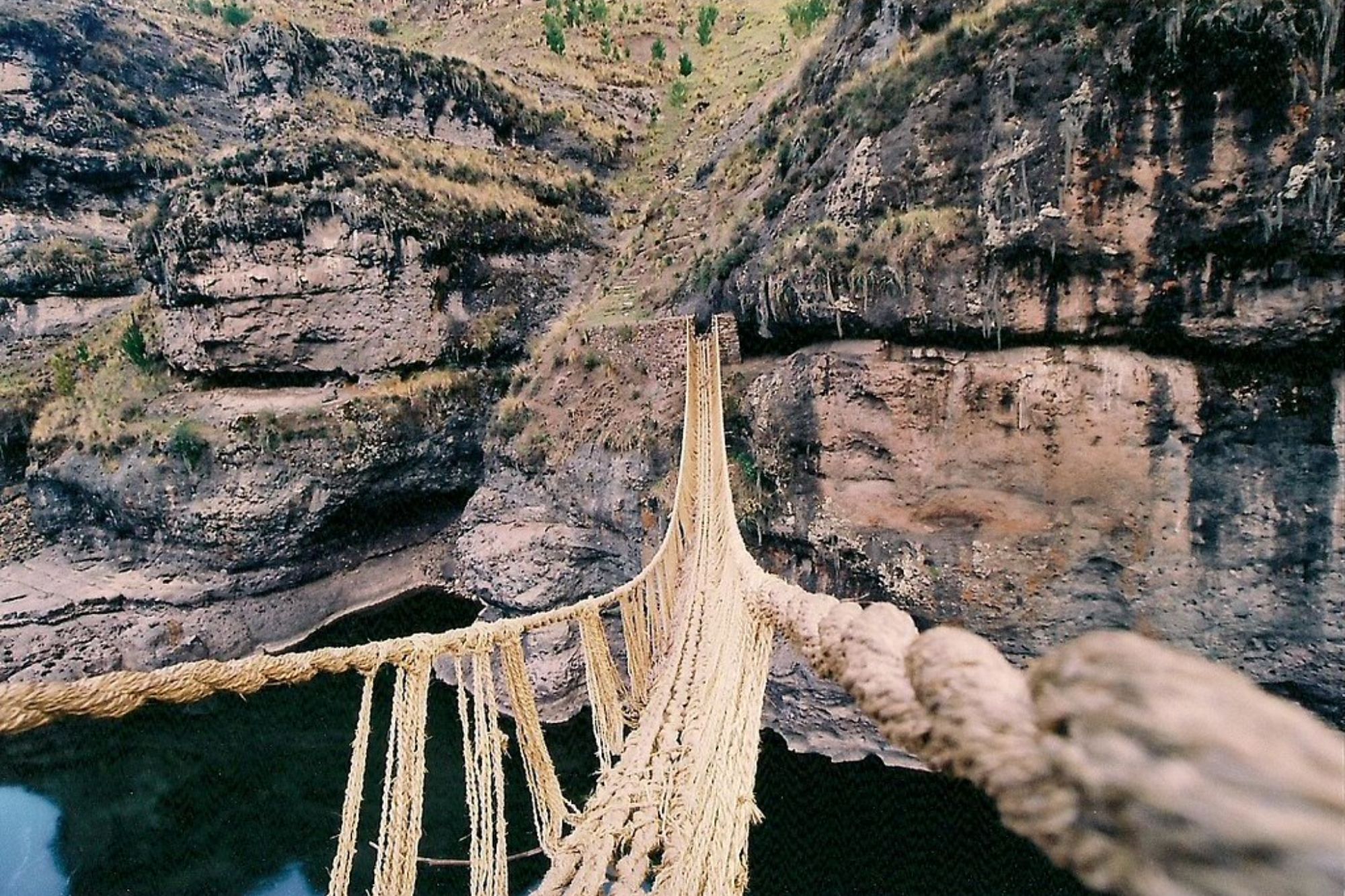
This cultural trek focuses on reaching the last remaining Inca rope bridge, still handwoven annually by local communities using traditional techniques passed down since Inca times. The two-day hike traverses landscapes at approximately 12,500 feet, passing through small villages where Spanish is a second language to Quechua.
Reaching the 118-foot bridge spanning the Apurimac River provides not just spectacular canyon views but also a connection to living history—a tangible link to engineering practices maintained for over 500 years.
Ancascocha Trek
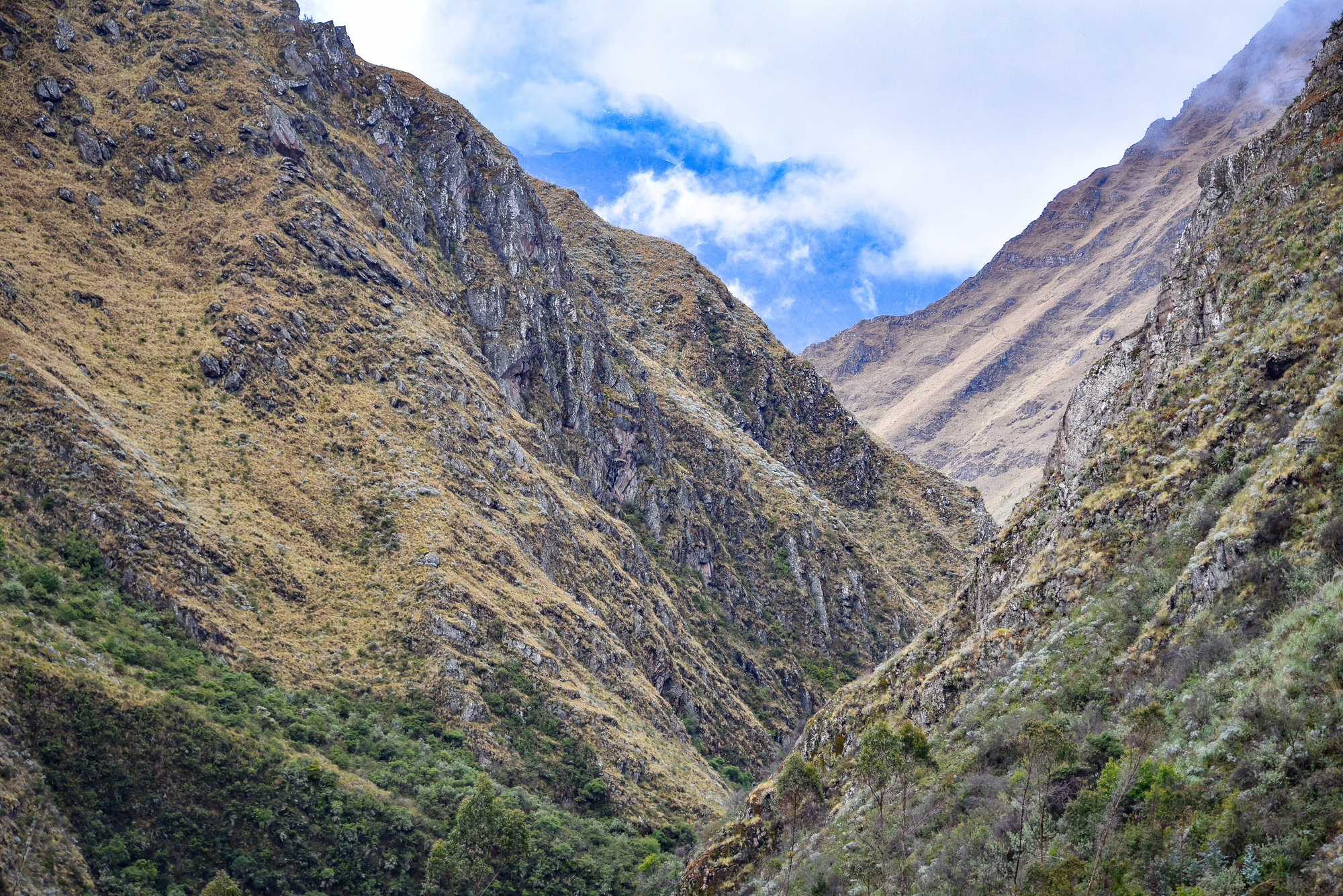
Sometimes called the ‘hidden Inca Trail,’ this four-day route remains wonderfully undiscovered despite offering mountain scenery rivaling Peru’s most famous hikes. The path winds through remote mountain communities at elevations between 12,000 and 15,000 feet, where trekkers might be the only tourists villagers see for weeks.
The highlight comes at Ancascocha Lake at 14,500 feet, where the still waters perfectly reflect surrounding glaciated peaks, creating a double image of mountain majesty rarely captured in more accessible locations.
Mount Veronica Circuit
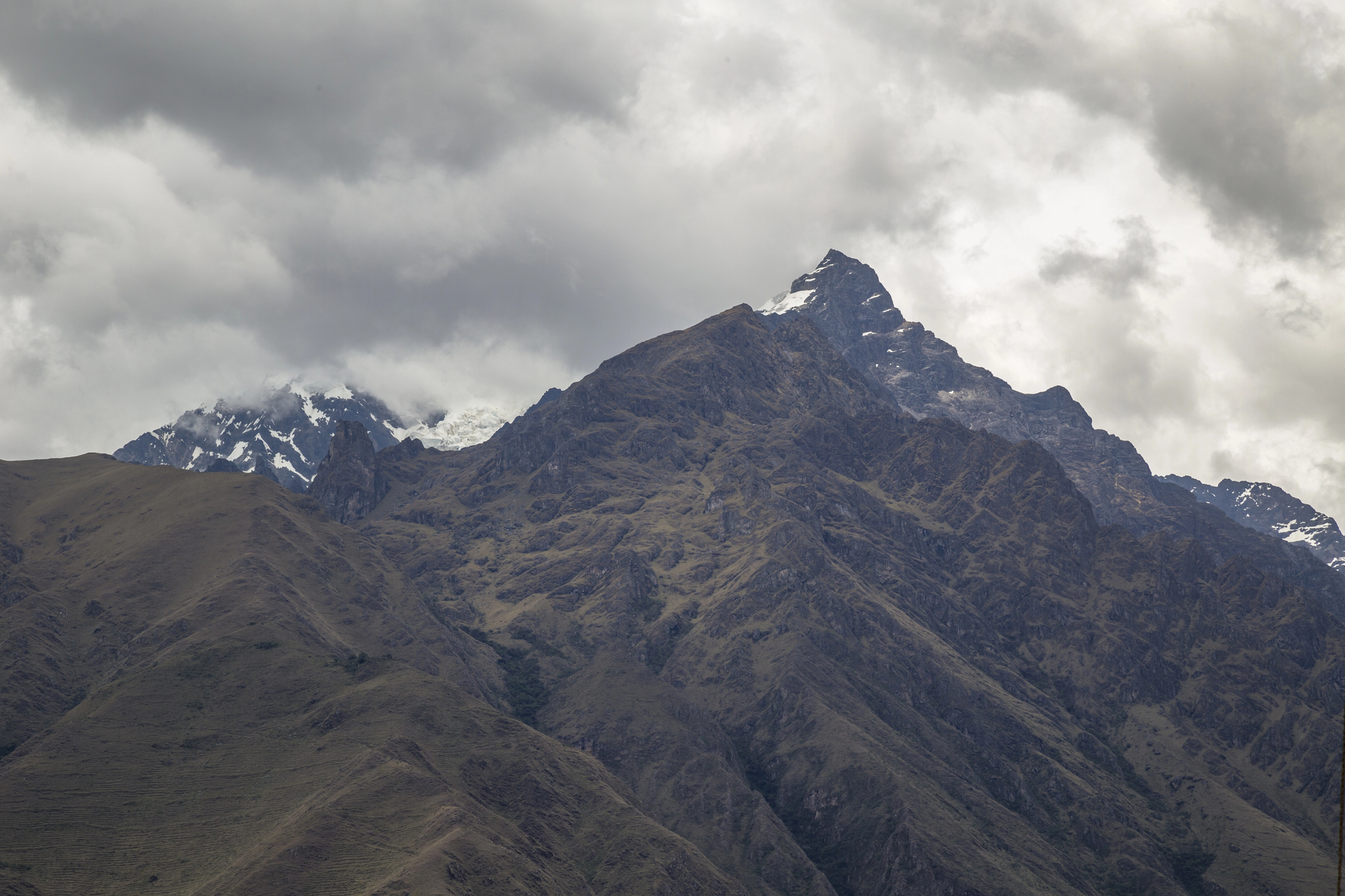
This challenging four-day circuit loops around snow-capped Veronica mountain (19,100 feet), a prominent peak visible from Cusco on clear days. The route tests endurance with four high-altitude passes, including one at 15,750 feet, where hardy hikers are rewarded with panoramic views of multiple mountain ranges.
Traditional villages along the way maintain pre-Hispanic customs, including offerings to the mountains—practices trekkers may witness during certain seasons when communities perform ancient ceremonies seeking agricultural fertility.
Like Travel Pug’s content? Follow us on MSN.
Quelccaya Ice Cap
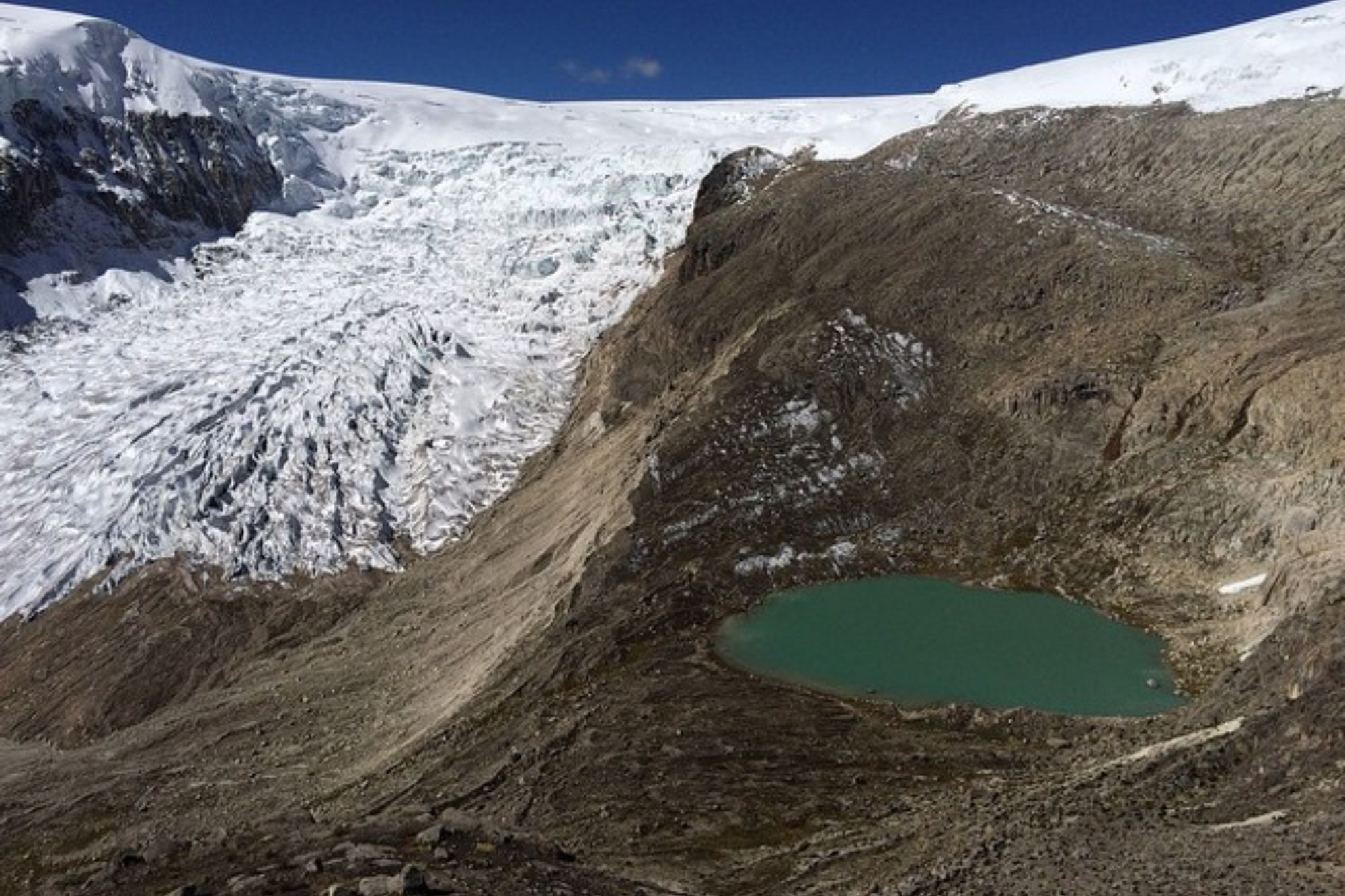
For true altitude adventurers, this specialized five-day expedition reaches the world’s largest tropical glacier at approximately 18,000 feet. The trek demands serious acclimatization and excellent fitness but delivers unparalleled experiences crossing glacial terrain that indigenous people consider sacred.
Climate change has accelerated the melting of this massive ice sheet, giving the journey a bittersweet urgency—trekkers witness both extraordinary beauty and sobering evidence of environmental transformation at the planet’s highest tropical elevations.
Inca Jungle Trail

This multi-sport alternative combines high-altitude trekking with mountain biking, zip-lining, and optional river rafting. The four-day adventure begins with an exhilarating 50-mile downhill bike ride from 14,300 feet to 4,900 feet, transitioning from alpine terrain to high jungle environments.
Trekkers then ascend ancient stone paths through coffee and fruit plantations, where the changing ecosystems demonstrate how altitude dramatically influences both natural environments and agricultural practices within relatively short distances.
Q’eswachaka to Espinar

This off-the-beaten-path four-day trek connects the famous Inca rope bridge to remote highland communities in the Espinar province at elevations averaging 13,000 feet. The route follows ancient trading paths used for centuries to transport goods between ecological zones, passing pre-Columbian archaeological sites rarely visited by foreigners.
Trekkers camp near small villages where locals still perform traditional K’aspichaki rituals during which they ‘marry’ their alpacas to ensure good breeding—cultural experiences impossible to find on standard tourist circuits.
Like Travel Pug’s content? Follow us on MSN.
Andean Heights and Ancient Wisdom

These high-altitude experiences around Cusco represent more than just physical challenges—they offer profound connections to both natural wonders and ancient human achievement. Walking these trails means following in the footsteps of Inca messengers, settlers, and pilgrims who navigated these mountains centuries ago without modern gear or medical knowledge.
Today’s trekkers gain not only unforgettable vistas and physical accomplishment but also a deeper appreciation for the ingenuity and resilience of Andean peoples who thrived in these demanding environments. Each route reveals different facets of Peru’s remarkable vertical geography, from glacial peaks to high jungle transitions, while cultural encounters along these ancient pathways demonstrate how altitude has shaped human adaptation and belief systems for millennia.
Whether choosing a classic route or venturing into rarely visited highlands, altitude trekking around Cusco transforms visitors into temporary inhabitants of a vertical world where mountains touch the sky and every step becomes part of a journey through both geography and time.
More from Travel Pug

- Cities Growing so Fast You Won’t Recognize Them in 10 Years
- 13 Destinations Where Tourists Regularly Regret Their Trip
- 20 Obscure WWII Sites Even History Buffs Don’t Know About
- 10 Under-the-Radar Mountain Towns That Are Both Affordable and Beautiful
- Remote Villages in Europe Where You Can Live for Free in Exchange for Work
Like Travel Pug’s content? Follow us on MSN.
